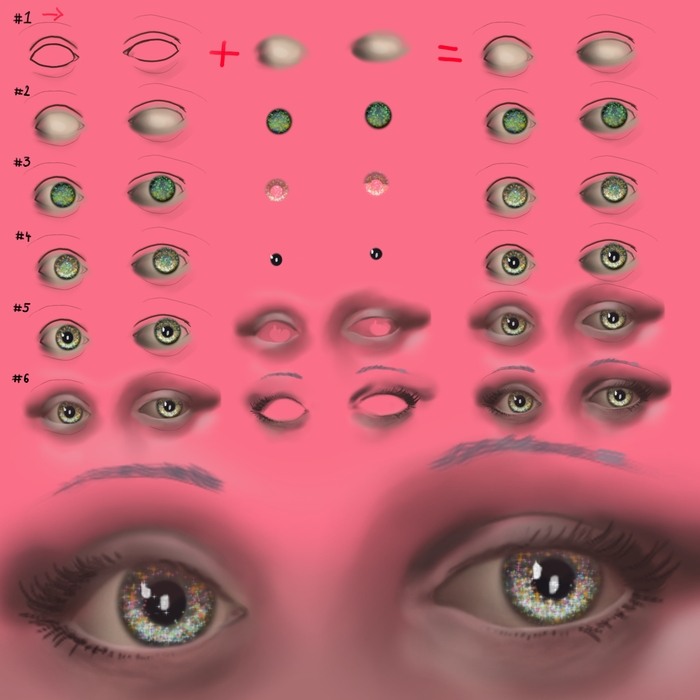Don't Try To Paint The Whole Mona Lisa In One Go
Sunday • February 6th 2022 • 8:16:19 pm
All the tutorials show you how,
some mention how many sittings (or painting sessions).
But few tell you that you just paint one part a day,
and sometimes you shouldn't even finish.
The aim must never be to paint a Mona Lisa,
but rather to have a wonderful time painting some small part of her.
If you sit down to paint a whole Mona Lisa,
all the parts will cross and overlay, and kick you out.
Worst yet, you may trick yourself that you can't paint very well,
and not return to painting for decades - or ever.
Personally, I prefer to outline a portrait first,
and I don't want to use any tricks, just go free hand.
Unless, I need to hurry,
if there is no time, then you just overlay the thing an trace the outlines.
You should also trace when painting a portrait,
as it is less surprising to hand in a realistic portrait.
In my opinion the work of the artist is more important than the subject,
art is a super-set of reality.
But creating an impression of a subject,
and creating a portrait of a subject, are two separate roads.
As to whether to paint with Oils or Digital,
the answer is learn both, as one will teach you about the other.
But if you are just starting, use Krita and a $40 Digital Tablet,
as all you have to do to start, is sit in front of your computer.
As you can imagine, digital paint simulates oil paint,
but is infinitely more forgiving.
Press the "E" key to put your brush into eraser mode,
and with a single swipe you can redo the problem area.
Let me put it this way,
and if there is one thing you take away from all this, remember this: "Digital Painting Loves You".
And if you take away two things, oh my gosh, there is something so important that can trip you up here,
DON'T USE THE MOUSE TO PAINT, I know you think you can, but you can't - IT HAS NO PRESSURE SENSOR, just get the damn $40 tablet.
Now, when you do sit down to painting just the eyes for the evening,
people will advise yo to follow some system.
There is no system, you simply need to paint what you feel is the next step,
on a separate layer.
Just press the insert key,
and start working on the next hing you feel you need to add to the eyes.
If you need to restart, press the "DEL" key, to clear the entire layer,
and if you feel you went to far...
And for example, you don't need to keep eye lashes and eye-shadow makeup on separate layers,
just press ctrl-e to merge the layers, and never think about it again.
Just remember for the next time,
that you don't need to get fancy with eye-lashes and eye shadows.
So it is not a system, though you probably want to doddle an outline on the first layer,
and then just keep adding colors and details.
Decades ago, in a speed painting video I found in a magazine or similar,
I saw a person avoid outlines, and just start by laying down wide brushes of color.
Eventually you'll find comfort in some pattern,
but you should never call it a system, and teaching it could cause discomfort and confusion to your students.
In conclusion I would like to explain something,
about the title image.
You are in fact not seeing a progression of steps,
not exactly.
What I am doing here,
is turning on all the layers that make up my Mona Lisa's eyes.
From my initial sketch,
all the way out to make up and eyebrows.
To be more precise, the layer with reflections over the iris,
is just four little swipes of white, that would not make much sense on their own.
So one by one, I am turning on the layers or eye-details on each layer,
that eventually create the eyes.
If I feel that something is missing,
I can easily go back and add it, as each detail is isolated on it's own layer.
For example the third layer over the more defined sketch,
that gives the eyeballs roundness, could use a little bit of blur.
If I used a blur tool on that layer,
to even out the progression between the light browns.
It would have no impact what so ever on the sharpness of the underlying sketch,
or the details overlaying star background to the iris.
This is too complex to create some kind of a system,
I simply isolate things on their own layers.
I work with them later on,
I won't smudge or damage anything else.
